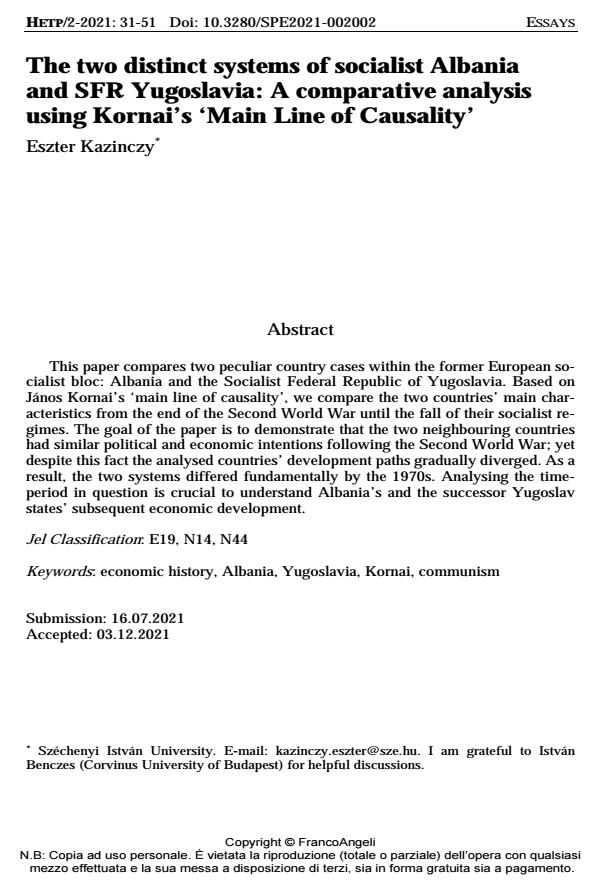The two distinct systems of socialist Albania and SFR Yugoslavia: A comparative analysis using Kornai’s ‘Main Line of Causality’
Titolo Rivista HISTORY OF ECONOMIC THOUGHT AND POLICY
Autori/Curatori Eszter Kazinczy
Anno di pubblicazione 2022 Fascicolo 2021/2
Lingua Inglese Numero pagine 21 P. 31-51 Dimensione file 111 KB
DOI 10.3280/SPE2021-002002
Il DOI è il codice a barre della proprietà intellettuale: per saperne di più
clicca qui
Qui sotto puoi vedere in anteprima la prima pagina di questo articolo.
Se questo articolo ti interessa, lo puoi acquistare (e scaricare in formato pdf) seguendo le facili indicazioni per acquistare il download credit. Acquista Download Credits per scaricare questo Articolo in formato PDF

FrancoAngeli è membro della Publishers International Linking Association, Inc (PILA)associazione indipendente e non profit per facilitare (attraverso i servizi tecnologici implementati da CrossRef.org) l’accesso degli studiosi ai contenuti digitali nelle pubblicazioni professionali e scientifiche
This paper compares two peculiar country cases within the former European socialist bloc: Albania and the Socialist Federal Republic of Yugoslavia. Based on János Kornai’s ‘main line of causality’, we compare the two countries’ main char-acteristics from the end of the Second World War until the fall of their socialist re-gimes. The goal of the paper is to demonstrate that the two neighbouring countries had similar political and economic intentions following the Second World War; yet despite this fact the analysed countries’ development paths gradually diverged. As a result, the two systems differed fundamentally by the 1970s. Analysing the time-period in question is crucial to understand Albania’s and the successor Yugoslav states’ subsequent economic development.
Parole chiave:economic history, Albania, Yugoslavia, Kornai, communism
Jel codes:E19, N14, N44
Eszter Kazinczy, The two distinct systems of socialist Albania and SFR Yugoslavia: A comparative analysis using Kornai’s ‘Main Line of Causality’ in "HISTORY OF ECONOMIC THOUGHT AND POLICY" 2/2021, pp 31-51, DOI: 10.3280/SPE2021-002002